MLB Draft: A look back at the last ten first overall selections
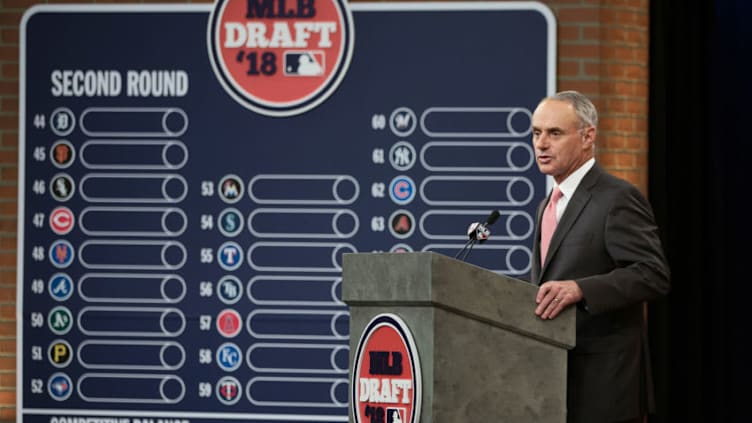
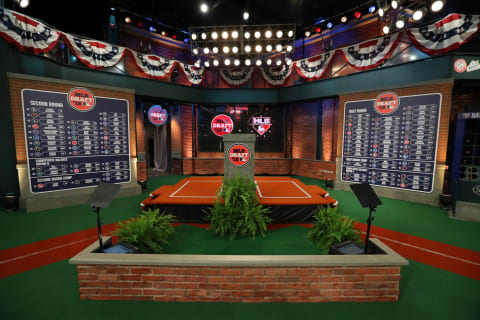
The MLB draft is the key to any organization’s depth when the major league team has a bad or down year. Only one team per year can pick first overall, and every team has had their share of glory and failure at drafting in this sacred draft position.
Each year, hundreds of college and high school baseball players across the country wait anxiously by their phones to hopefully receive a call from a major league team through the MLB draft process.
The June amateur draft is held every year and is used as a system for teams to restock their farm systems with new and young talented players who could potentially contribute with the big league club. Now there is certainly a lot more prospects drafted by MLB clubs then there are who make it to the show, but for many players, being drafted allows them to continue playing baseball and even make a little money doing it (and I truly mean, a little amount of money).
Even with being drafted, there is no guarantee that a player will make it to the MLB if they are drafted in the high rounds. For example, since the 2005 draft, there are 11 players within the first round and competitive balance round who never made it to the show, and many of these players are no longer playing professional baseball.
Truth be told, drafting prospects is never easy, and teams are now starting to use advanced technology in order to scout prospects they are interested in. Things like velocity and spin rate can easily be recorded, and expensive cameras can slow down any players movement to look for any potential tweaks or future adjustments.
The 20-80 scouting system is still generally used by most scouting departments, but a lot of teams are shifting away from using old time scouts who have that special intuition on what makes a minor league player standout, and are switching to advanced analytics.
This article is going to examine players who were drafted first overall over the past 10 drafts and where their careers have gone since they were drafted first overall. We will have to take into account that players drafted in recent years may still be a few years away from contributing to the team, but nevertheless, we can still examine how their minor league development.
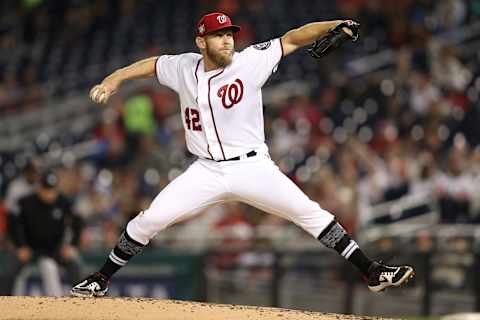
Stephen Strasburg
Stephen Strasburg was a rare case in that his talent but also his representation by super agent Scott Boras netted him a ton of guaranteed money before he played one inning of professional baseball. Strasburg would receive a 4 year, $15.1 million dollar deal that would go on to be the new record for guaranteed money for an amateur prospect.
The thing about Strasburg was looking at his potential, this money was a drop in that hat for what would surely come over the next few years.
Strasburg was so intriguing to many scouts and teams that year because of his fastball, which constantly reached and hovered around the 100 MPH mark. He had been playing at San Diego State and was pitching well, an all signs were pointing to continued success as he was called up to the big leagues in June of 2010, basically one year after he had been drafted.
Just a few months into his major league career, the bad news train came rolling into Washington, as Strasburg would be shut down for most of 2011 while he recovered from Tommy John surgery. A pretty devastating blow to Stephen and the Nationals, as they were really depending on him to contribute to the team.
Nevertheless, Strasburg would return and has been very steady at the major league level. Over the course of his ten year career, the right hander has a 95-53 record with a 3.18 ERA. Considering he has been around for 10 seasons, this is certainly a great mark for any pitcher at age 30. He is currently signed with the Nationals and his contract does not expire until 2023.
The Washington Nationals drafted well with this pick.
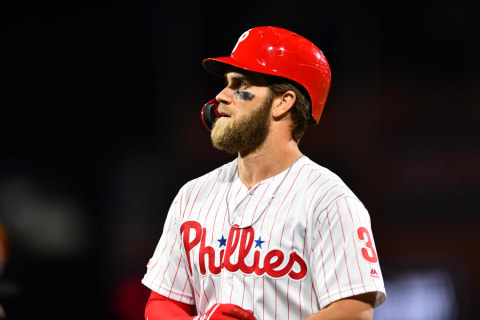
Bryce Harper
I am sure many baseball fans recognize the name Bryce Harper due to this past offseason, and if you are a Nationals fan, you are probably still dealing with the breakup.
Bryce Harper was a 17 year old catching prospect who played Junior College baseball for Southern Nevada and going into the 2010 amateur draft, was the consensus #1 pick.
The Washington Nationals stumbled once again in the 2009 season, and were awarded the first overall pick once again, and quickly drafted Bryce Harper. He too was represented by Scott Boras and both sides came to an agreement just before the deadline with a 5 year, $9.9 million deal.
Once he was drafted, Harper would never catch a game behind the plate, spending most of his time entrenched in the outfield, particularly in RF.
He would make his professional debut for the Nationals in 2012, being called up to the team in late April. His time with the Nationals would be spent well, as he would win Rookie of the Year in 2012 and the NL MVP in 2015. Over the 7 years in Washington, he would slash a .279/.389/.513, which is very good for a player who reached 7 years of playing time at the age of 26.
This past offseason, the baseball world was filled with news of Bryce Harper, as he was the premier free agent on the market. He would go on to sign a 13 year, $330 million dollar deal with the Philadelphia Phillies, and with a no trade clause and no options, would assure he would most likely spend his career as a Philly.
A tough pill to swallow for Nationals fans, but an excellent payday for Harper.
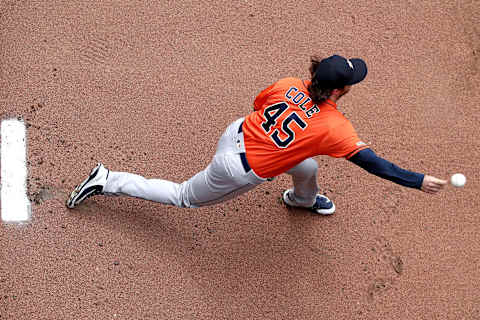
Gerrit Cole
In 2011, it was not the Washington Nationals would be drafting first, but the Pittsburgh Pirates would have the honour of 1st overall, and they chose right hander Gerrit Cole.
Cole is stranger to being drafted in the 1st round. In 2008 he was selected 28th overall by the New York Yankees but chose not to sign with the team and instead went and played college ball for UCLA.
His time in college would be well spent, as he would move from 28th overall to 1st overall in 2011, singing with the Astros for a record breaking $8 million dollar bonus.
Cole was deemed one of the best pitchers in the 2011 draft, with a fastball sitting at around 95 MPH and he certainly had the ace potential. He would make his professional debut with the MLB team in 2013 and was a stalwart in their rotation, leading the charge with a 59-42 record and 3.50 ERA.
His time in Pittsburgh would last for 5 years, as he was traded to the Houston Astros before the 2018 season began. The Pirates would receive four players in return from Houston, headlined by pitcher Joe Musgrove and infielder Colin Moran.
Since his time in Houston, Cole has been electric, posting a 16-7 record with a 2.92 ERA, and was 5th in Cy-Young voting last year.
Gerrit Cole is signed through 2019 and will become a free agent before the 2020 season, and you can bet quite a few teams will be eying his services if Houston does not retain him.
Another successful first overall pick.
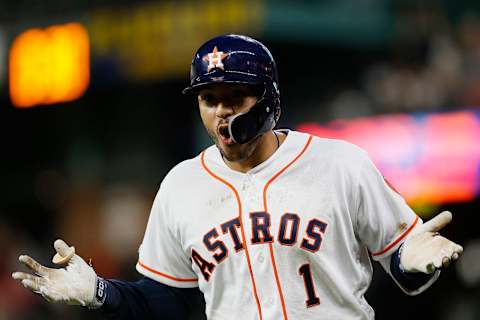
Carlos Correa
Carlos Correa had the unfortunate timing of being selected first overall right after a new Collective Bargaining Agreement was put in place and the MLB agreed to slot valuations for its top players (thanks Scott Boras).
The Houston Astros would stumble hard in 2011, and would pick SS Carlos Correa from the Puerto Rico Baseball Academy and he would sign a team friendly $4.8 million dollar signing bonus. He would also be the highest ranking player ever drafted while still playing in Puerto Rico, going 1st overall at just 17 years old.
Correa would spend three season of minor league and winter league ball before being called up to the active roster in June 2015. In his first year of professional ball, he would slash .279/.345/.512 and would be named Rookie of the Year for the American League.
Over his 5 year career, the Puerto Rican native has a career slash line of .277/.356/.477 and World Series ring he won with the Astros in 2017.
He would be a key piece of the team during the postseason, as his combined slash line over 3 different postseason runs is a respected .278/.336/.524, and he hit a key home run for the team in 2017 against the Dodgers in the World Series.
Carlos Correa is arbitration eligible beginning in 2020 and will not become a free agent until 2022, so barring any unforeseen trade, Correa will donning the orange jerseys for at-least four more years.
Another stellar 1st overall pick.
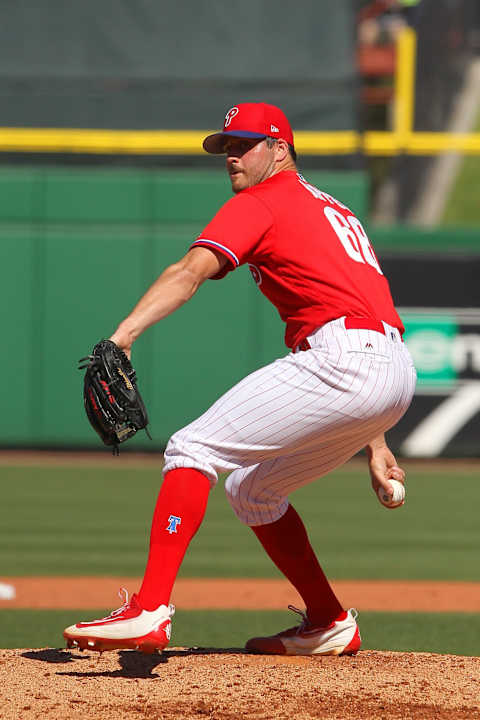
Mark Appel
Mark Appel is a case of a player who had such high potential, but just could not find his footing in professional baseball.
Appel was drafted on three separate occasions, once in high school by the Tigers (15th round), once by the Pittsburgh Pirates (1st round), and then lastly by the Houston Astros (1st overall, 1st round).
In 2012, Mark Appel was projected to be a potential 1st overall pick, but began to slide down the draft board after it was reported that he may be difficult to sign. Represented by, you guessed it, Scott Boras, no team could meet Appel’s signing bonus demands and he would reject a $3.6 million dollar bonus from the Pirates when they selected him at 8th overall.
Returning to Stanford for his Senior season, Appel would pitch well enough where the Houston Astros would make him a 1st overall pick in 2013, signing him to a deal worth $6.35 million (roughly $2.7 million more than he would have received the year prior).
What followed the contract signing was an abysmal career in professional baseball, with Appel never being able to reach the major leagues and consistently being at the AA and AAA level.
Dubbed one the biggest draft busts in the history of baseball, his career line would end up being 25-18 with a 4.87 ERA. He was just never able to find the same form that he had while playing college ball, and after stops being traded by the Astros to the Phillies in 2015, Appel would leave baseball after the 2017 season at the age of 26. If he were to play again, the Phillies have his rights.
While I truly don’t wish any player to have a bad career, it is unfortunate to see a player of Appel’s level not make it to the major leagues. It is just another reason why not every prospect drafted in the 1st round is guaranteed to make it to the big leagues.
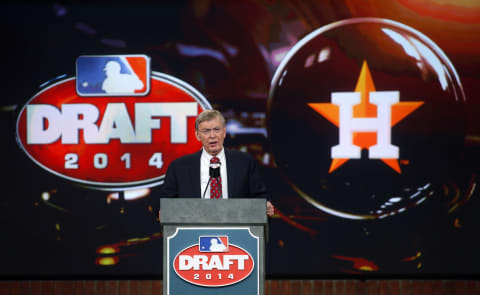
Brady Aiken
If the past few years didn’t have enough drama, Brady Aiken was about to shake up the amateur draft.
Aiken was playing high school ball in San Diego, the Houston Astros (again) were awarded the 1st overall selection, and they went with top prospect Brady Aiken.
While the two sides had reached an agreement for $6.5 million, a physical found some health issues with the high school prospect. With that in mind, the Houston Astros lowered their offer which Aiken refused. With the refusal, Aiken and the Astros would not reach an agreement, and Brady Aiken would go back to school as a postgraduate student at IMG Academy.
In a sheer twist of unfortunate, Aiken would tear the nerve in his pitching elbow during his first start at the academy, and would need Tommy John surgery. I guess the Houston Astros medical team saw something that was alarming, and it turned out they were right.
After his TMJ surgery, the Cleveland Indians would select Brady at 17th overall in the first round, but for a payday of around $2.5 million rather than the reduced $5 million the Astros offered after the medical diagnosis with being selected the year prior. Talk about betting on yourself and falling flat on your face.
As it sits right now, Aiken is still in the minor league organization for the Indians, and he missed a crucial year in 2018 while being sidelined with another injury.
One could say this may be the turning point for Aiken in his baseball career, and while I do hope he can find success, his minor league numbers of 7-18 with a 5.18 ERA are not going to cut in the big leagues.
A weird scenario of betting on yourself and turning down significant amounts of money only to find yourself fighting to stay in professional baseball.
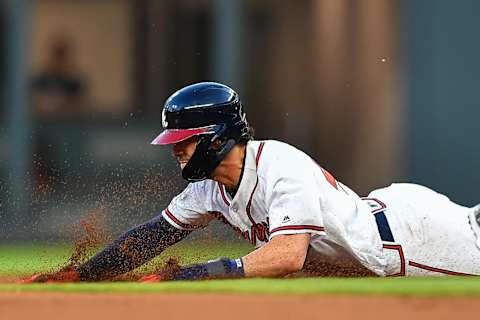
Dansby Swanson
Wanting to not cause any controversies like years prior, Dansby Swanson was selected 1st overall by the Arizona Diamondbacks and would put pen to paper by signing a deal worth $6.5 million.
A product of Vanderbilt, Swanson was another SS selected at 1st overall and would begin his minor league career with the Diamondbacks later in 2015.
While has was projected to be an everyday contributor, the Arizona Diamondbacks decided to deal Swanson while having just completed his first year of professional baseball. The Diamondbacks would go on to complete one of the worst trades in franchise history, sending Swanson, Aaron Blair, and Ender Inciarte to the Atlanta Braves for pitcher Shelby Miller. Both Swanson and Inciarte would become everyday players with the Braves, while Miller pitched horribly in Arizona and is now with the Texas Rangers organization.
For a career, Dansby Swanson is a career .244/.318/.378 hitter and has been with the Braves since being called up in August of 2016.
Compared to other 1st overall picks, Swanson is really not being an impactful player on the roster when compared to Harper or Correa. He is still an everyday player and considerably a good player, he has just not lived up to the hype the 1st overall pick usual has with them.
Still lots of time for Dansby Swanson to continue playing at the MLB level, and I am sure he will be a major league ballplayer for many years to come.
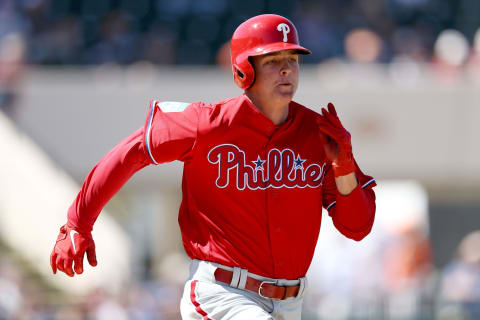
Mickey Moniak
When the dust had settled at the amateur draft, not many scouts and teams had thought the Philadelphia Phillies would select Mickey Moniak at 1st overall. Don’t get me wrong, Moniak was a top rated prospect in the draft, but he was rated the 5th best prospect in the draft. It just goes to show you how drafting between teams is very different and when a team wants a certain player, they really want that player.
The two sides would eventually come to a signing bonus agreement of $6.1 million dollars, which was significantly under slot value given the overall position Moniak was drafted in.
A high school senior, Moniak would begin his professional debut in 2016 at 18 years old. Since 2016, the CF has begun to climb the rankings and in 2019, he was brought into spring training with the Phillies and began the season in AA ball.
His career minor league slash line is .256/.301/.372 which is very promising given the level of talent Moniak is facing while he was in his late teenage years.
The MLB prospect watch does not have Moniak in its 100 top prospects list, and on the teams top 30 prospects he is listed at 9th overall. This is a little disappointing given how Moniak was taken at 1st overall and just hasn’t been able to produce like he did in high school.
It is obviously understandable that he is facing tougher competition now in professional baseball versus high school, but he just has not been able to get into the dominant form which made him a top 5 prospect in his draft year.
While I would not call Mickey Moniak a draft bust by any means, the CF has a lot more to prove if he is to make the big league team. With the Phillies signing some outfielders over the past offseason, I also could see the team trading Mickey Moniak sometime in the near future.
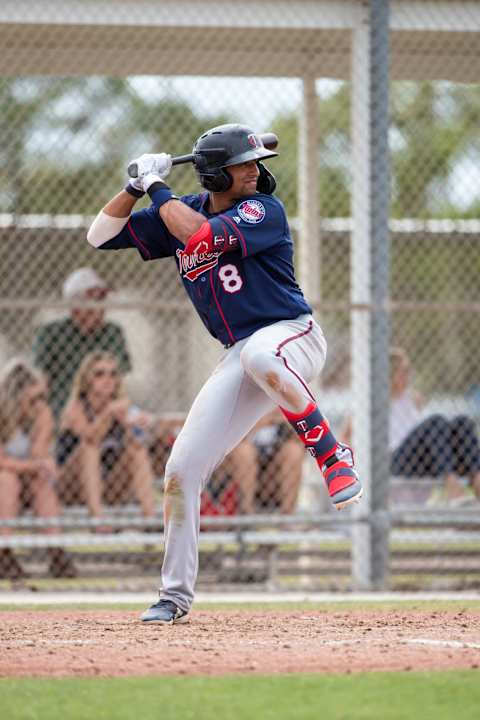
Royce Lewis
Another SS was selected at 1st overall, and this time it was California native high schooler Royce Lewis. Lewis was selected first overall by the Minnesota Twins after crushing the ball while playing in his high school league.
Royce Lewis would be signed to a $6.725 million dollar signing bonus and would begin his career in Rookie A ball in 2017 (same year as his draft). Since then, Lewis has stayed in A to A+ Rookie level ball, which is understandable given that he is only 20 years old this season.
Since being brought into the Twins organization, he has been crushing the ball once again, slashing a .282/.360/.427 with 18 home runs and 105 RBI. He is also a speed demon on the bases, collecting 51 bases in the three years he has been in the farm system. A very good number considering his shorten seasons in 2017 (draft) and 2019 (just began).
As per MLB pipeline, Royce Lewis is ranked at 4th overall on the top 100 list for the 2019 season, and the top ranked prospect in the Twins organization. There is plenty of reasons why he is ranked so high on the list, with scouts admiring his approach at the plate and his ability to make hard contact with the ball across the diamond. He is the shifts nightmare, and teams may actually have to lineup normally against him.
While Lewis is still in Rookie A ball this year, I wouldn’t be surprised if he makes the jump to AA and possibly even AAA by the end of the year. With a projected estimated time of arrival in 2020, he could have a big impact on a team that is always on the bubble to make the playoffs via the wildcard.
While the timing is still early on this pick, all signs are pointing to a legitimate first overall selection being a top contributor at the major league level.

Casey Mize
Last but not least, we have the first overall selection from the most recent season, Casey Mize. For the 2018 amateur draft, the Detroit Tigers had the 1st overall selection, and they went with the consensus first overall choice in Mize.
The college player from Auburn University would go on to sign with the Tigers for a record setting $7.5 million dollar signing bonus, the largest amount of money given to a prospect (under the new CBA and bonus pool era) who has never played a professional game of baseball.
More from Call to the Pen
- Philadelphia Phillies, ready for a stretch run, bomb St. Louis Cardinals
- Philadelphia Phillies: The 4 players on the franchise’s Mount Rushmore
- Boston Red Sox fans should be upset over Mookie Betts’ comment
- Analyzing the Boston Red Sox trade for Dave Henderson and Spike Owen
- 2023 MLB postseason likely to have a strange look without Yankees, Red Sox, Cardinals
There is plenty of reason why the Tigers gave Mize such a large deal. He was a main stay in the Auburn starting rotation and logged a large number of innings for the team that ended up competing in the college world series (they didn’t win or become runner up). He was one of the reasons the team made it so far and this led him to the be consensus #1 prospect in the 2018 amateur draft.
His time in minor league ball has been nothing short of dominant, throwing to a 1-1 record with a 1.99 ERA while in A league. While this is a short observation given he did not pitch much in 2018 with how many innings he logged with Auburn, it is a hopeful sight for the Tigers organization who is in desperate need of an ace.
On the MLB pipeline, Mize is currently ranked at 16th overall on the top 100 list and #1 in the Tigers farm system.
Even though he is in A ball, I have no doubt that the Tigers will be bringing him up to AA and most likely AAA by the end of the year. Like Lewis, Mize is not projected to crack the active roster this year, but 2020 should be the year he cracks the starting rotation.
Next. Red Sox: Top Prospect Michael Chavis Promoted to the Active Roster. dark
Given his professional career so far, when Casey Mize breaks the starting rotation for the Tigers, he should be dominating there for many years to come.